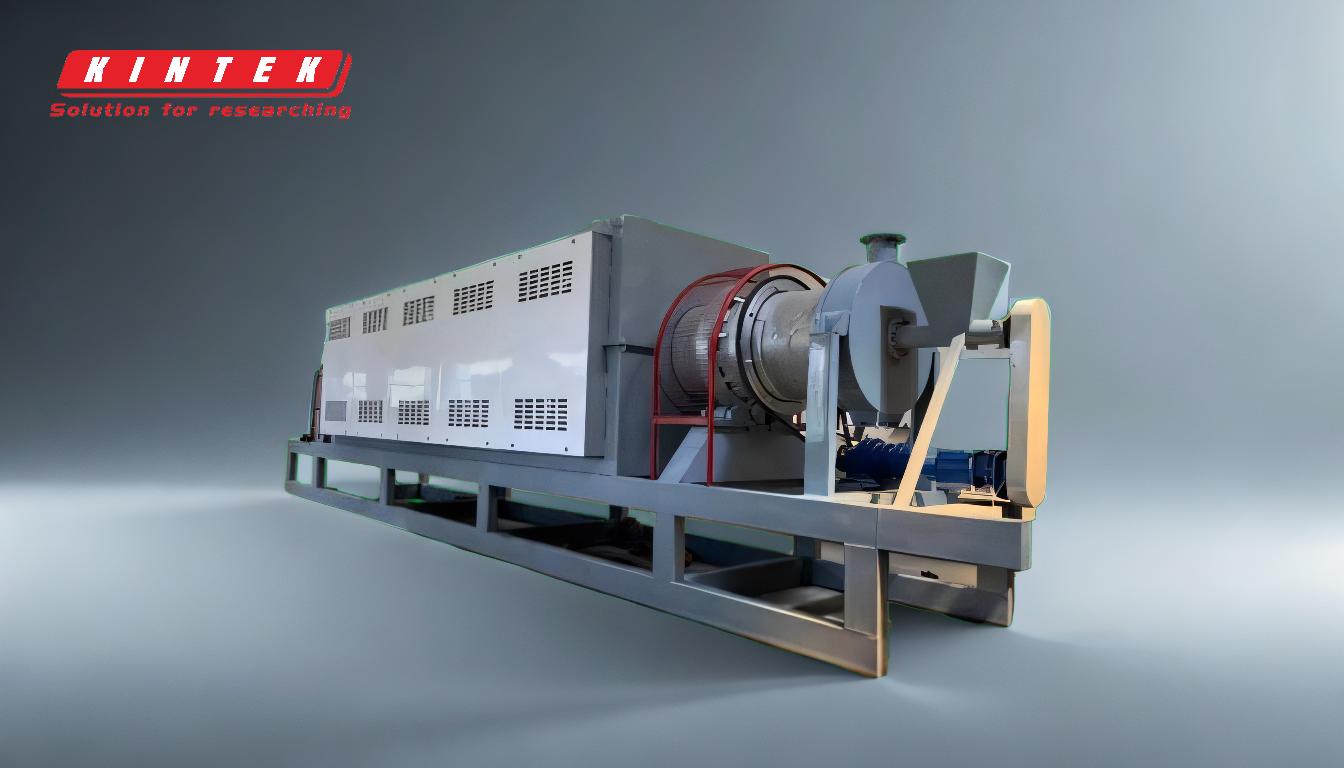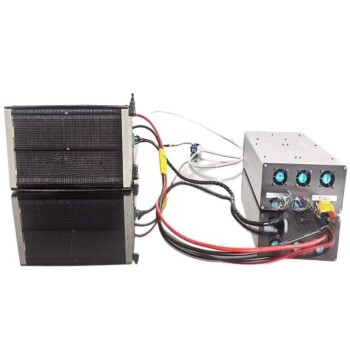The pyrolysis plant produces a variety of products depending on the feedstock used, such as waste tires, plastics, or biomass. The primary outputs include fuel oil (which can be refined into diesel), carbon black, and syngas. Additionally, waste tires yield steel wire, while biomass pyrolysis produces biochar and wood acid. These products have diverse applications, including fuel production, rubber and plastic manufacturing, and steel production. The specific product composition varies based on the input material, with oil output ranging from 35-45% for tires, 30-35% carbon black, and 8-15% steel wire and syngas. Non-condensable gases like hydrogen, methane, and carbon monoxide are also generated, which can be used for energy generation.
Key Points Explained:

-
Fuel Oil (Pyrolysis Oil):
- Description: A liquid product obtained from the pyrolysis process, which can be further refined into diesel or used directly as fuel.
- Applications: Used in industrial burners, boilers, and as a feedstock for refining into diesel.
- Variability: The oil output varies depending on the feedstock. For tires, it ranges from 35-45%, while for plastics and oil sludge, the yield may differ.
- Significance: This is the most valuable product of pyrolysis, often accounting for the majority of the plant's revenue.
-
Carbon Black:
- Description: A fine black powder consisting of carbon and non-volatile components of the feedstock.
- Applications: Used in rubber and plastic manufacturing, as a reinforcing agent in tires, and as a pigment in inks and paints.
- Yield: Typically 30-35% of the output when processing waste tires.
- Significance: Carbon black is a secondary revenue stream and has a wide range of industrial applications.
-
Syngas (Synthetic Gas):
- Description: A mixture of combustible gases such as hydrogen (H2), methane (CH4), carbon monoxide (CO), and non-combustible gases like carbon dioxide (CO2) and nitrogen (N).
- Applications: Used for electricity generation, as a fuel for burners, or in chemical synthesis.
- Yield: Typically 8-15% of the output, depending on the feedstock.
- Significance: Syngas provides an additional energy source, which can be used to power the pyrolysis plant itself, reducing operational costs.
-
Steel Wire:
- Description: Recovered from waste tires during the pyrolysis process.
- Applications: Recycled and used in steel production and manufacturing.
- Yield: Typically 8-15% of the output when processing waste tires.
- Significance: Steel wire is a valuable by-product, particularly in regions with a strong steel industry.
-
Biochar (Char):
- Description: A solid residue produced during biomass pyrolysis, consisting of carbon and non-volatile components.
- Applications: Used as a soil amendment, in carbon sequestration, and as a fuel.
- Significance: Biochar is particularly important in agricultural applications, where it improves soil fertility and carbon storage.
-
Non-Condensable Gases:
- Description: Gases that do not condense at normal temperatures, including hydrogen, methane, and carbon monoxide.
- Applications: Used for energy generation or as a fuel source.
- Significance: These gases provide an additional energy source, which can be harnessed to improve the overall efficiency of the pyrolysis plant.
-
Wood Acid (Biochemical):
- Description: A by-product of biomass pyrolysis, also known as pyroligneous acid.
- Applications: Used in agriculture as a pesticide or soil conditioner, and in the chemical industry.
- Significance: Wood acid is a niche product with specific applications, adding to the diversity of outputs from biomass pyrolysis.
-
Water and Sand:
- Description: By-products from the pyrolysis of oil sludge.
- Applications: Water can be treated and reused, while sand can be used in construction or disposed of safely.
- Significance: These by-products are typically less valuable but are important for ensuring the environmental sustainability of the pyrolysis process.
Conclusion:
The products of a pyrolysis plant are highly dependent on the feedstock used, with waste tires, plastics, and biomass each yielding different outputs. The primary products—fuel oil, carbon black, and syngas—are valuable commodities with wide-ranging industrial applications. Secondary products like steel wire, biochar, and wood acid further enhance the economic viability of pyrolysis plants. Understanding the specific outputs and their applications is crucial for optimizing the operation and profitability of a pyrolysis plant.
Summary Table:
| Product | Description | Applications | Yield (% of output) |
|---|---|---|---|
| Fuel Oil | Liquid product refined into diesel or used as fuel | Industrial burners, boilers, diesel refining | 35-45% (tires) |
| Carbon Black | Fine black powder used in rubber and plastic manufacturing | Tires, inks, paints | 30-35% (tires) |
| Syngas | Mixture of combustible gases (H2, CH4, CO) | Electricity generation, burners, chemical synthesis | 8-15% |
| Steel Wire | Recovered from waste tires | Steel production, manufacturing | 8-15% (tires) |
| Biochar | Solid residue from biomass pyrolysis | Soil amendment, carbon sequestration, fuel | Varies (biomass) |
| Non-Condensable Gases | Gases like H2, CH4, CO used for energy generation | Energy generation, fuel source | Varies |
| Wood Acid | By-product of biomass pyrolysis | Agriculture (pesticide, soil conditioner), chemical industry | Varies (biomass) |
| Water and Sand | By-products from oil sludge pyrolysis | Water treatment, construction | Varies (oil sludge) |
Want to optimize your pyrolysis plant's output? Contact us today for expert guidance!








